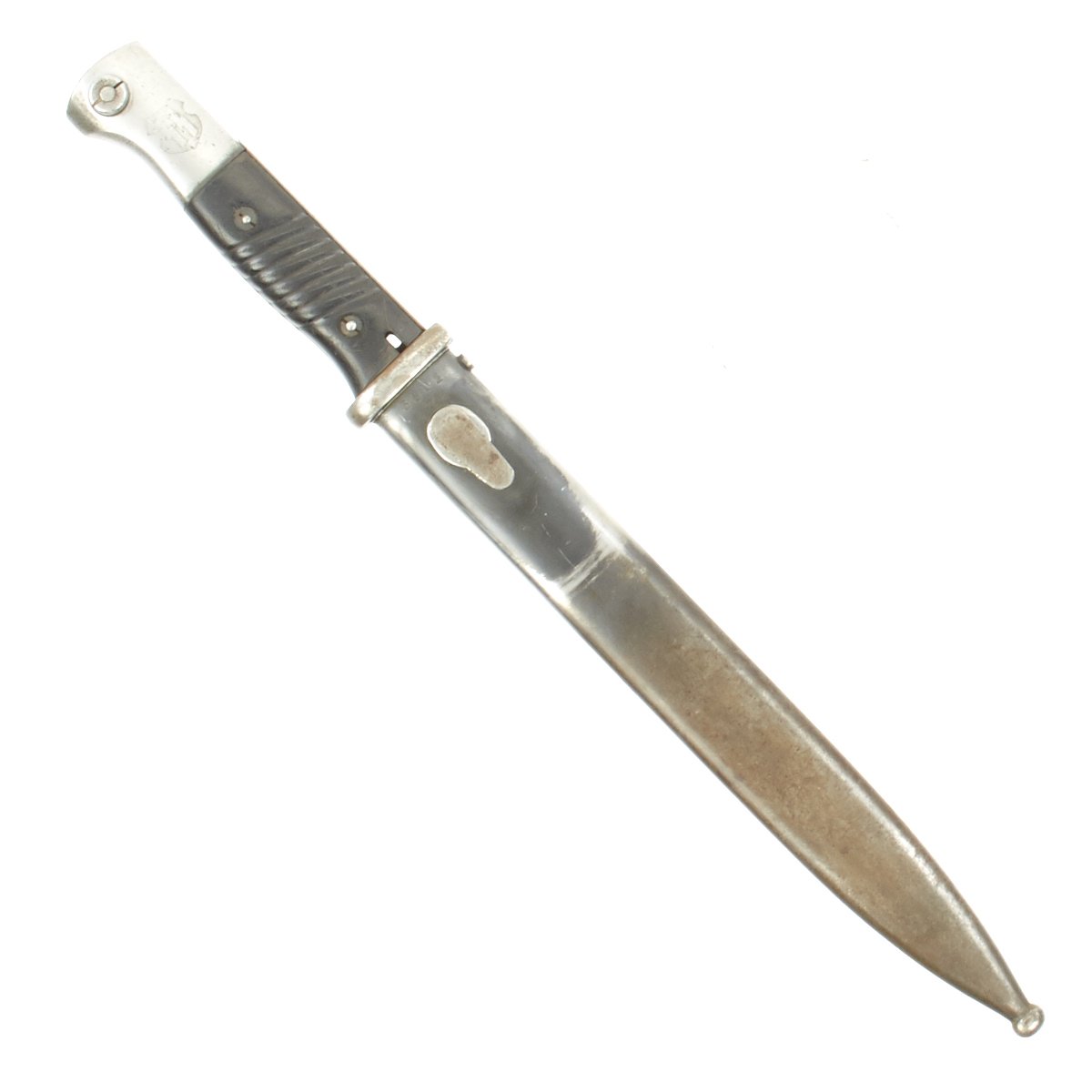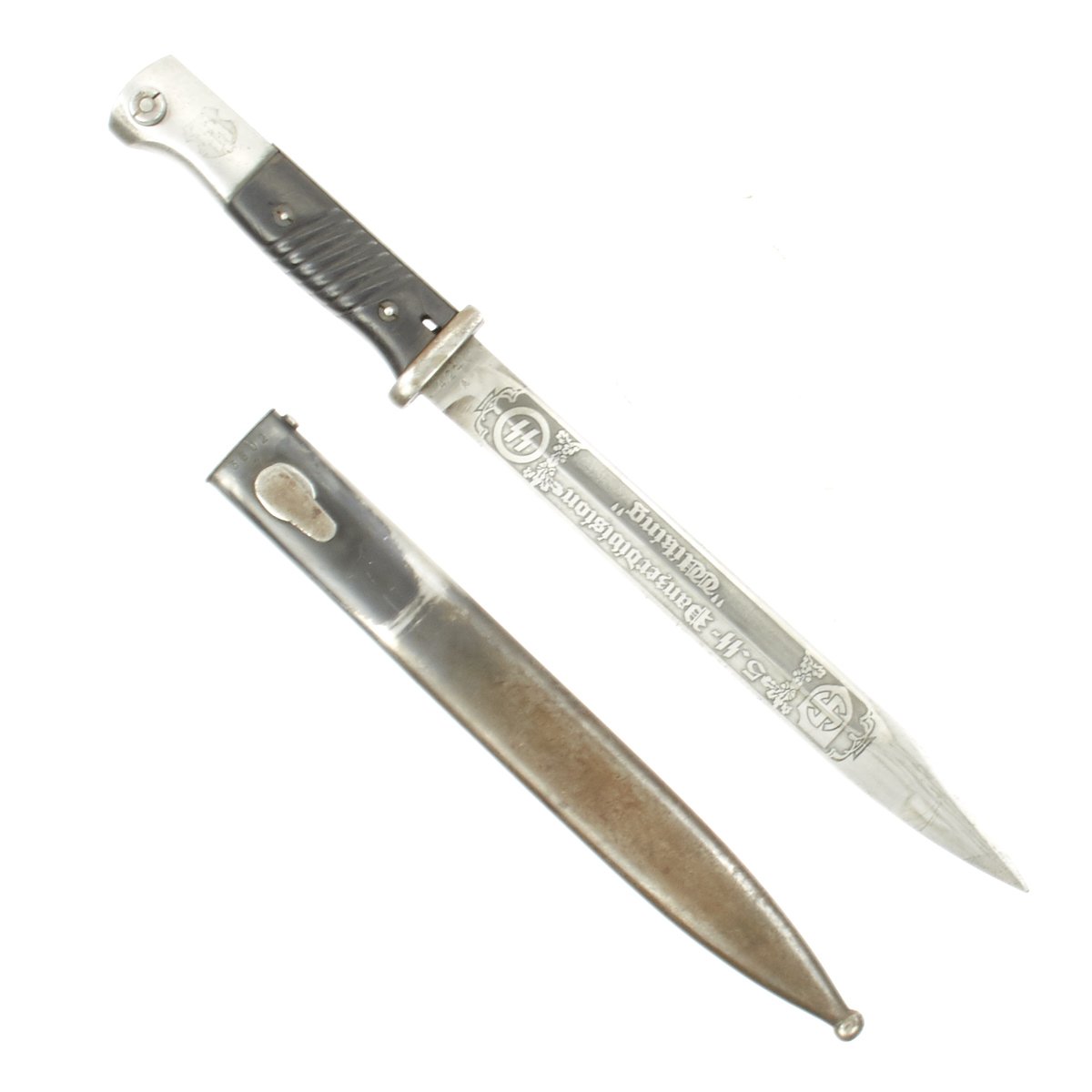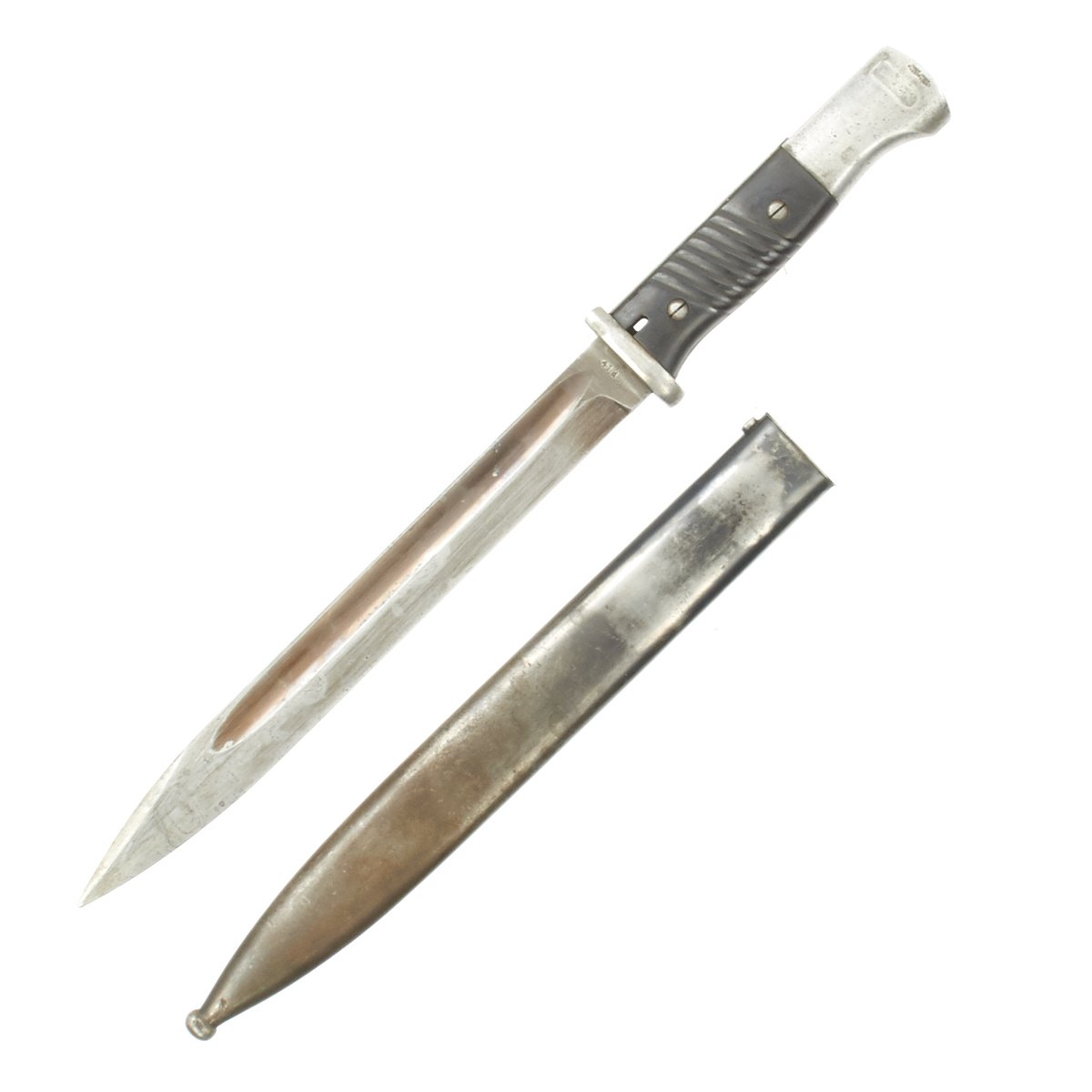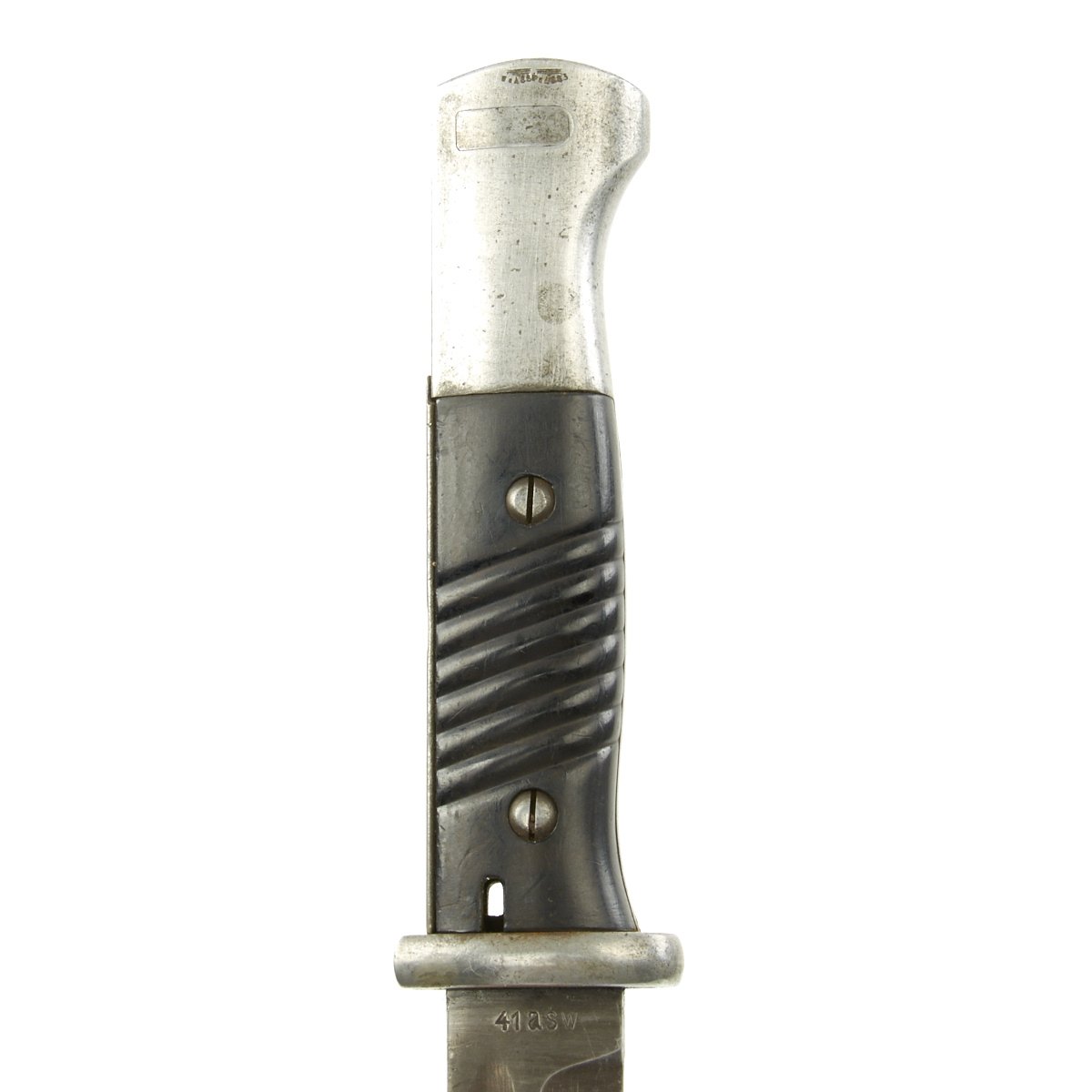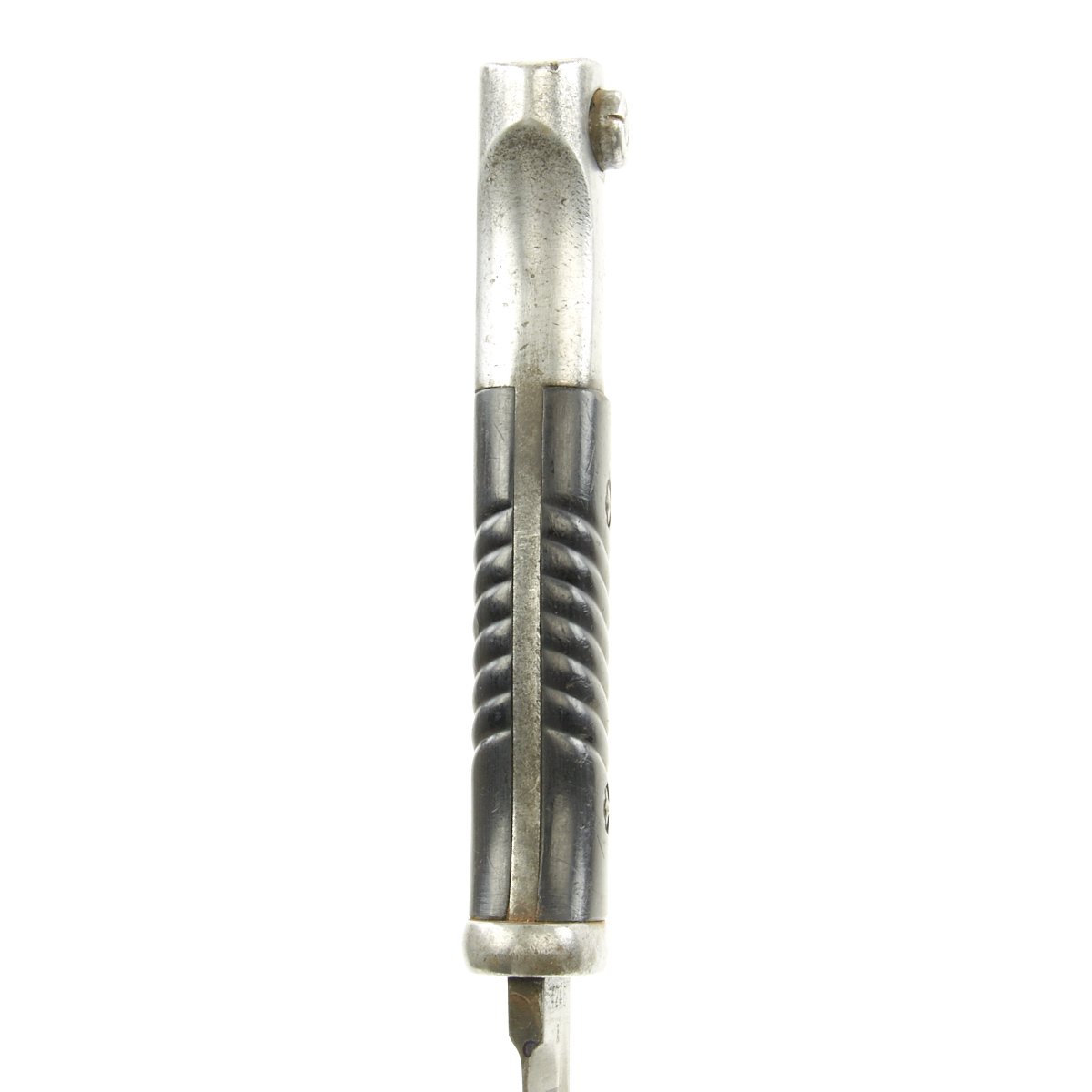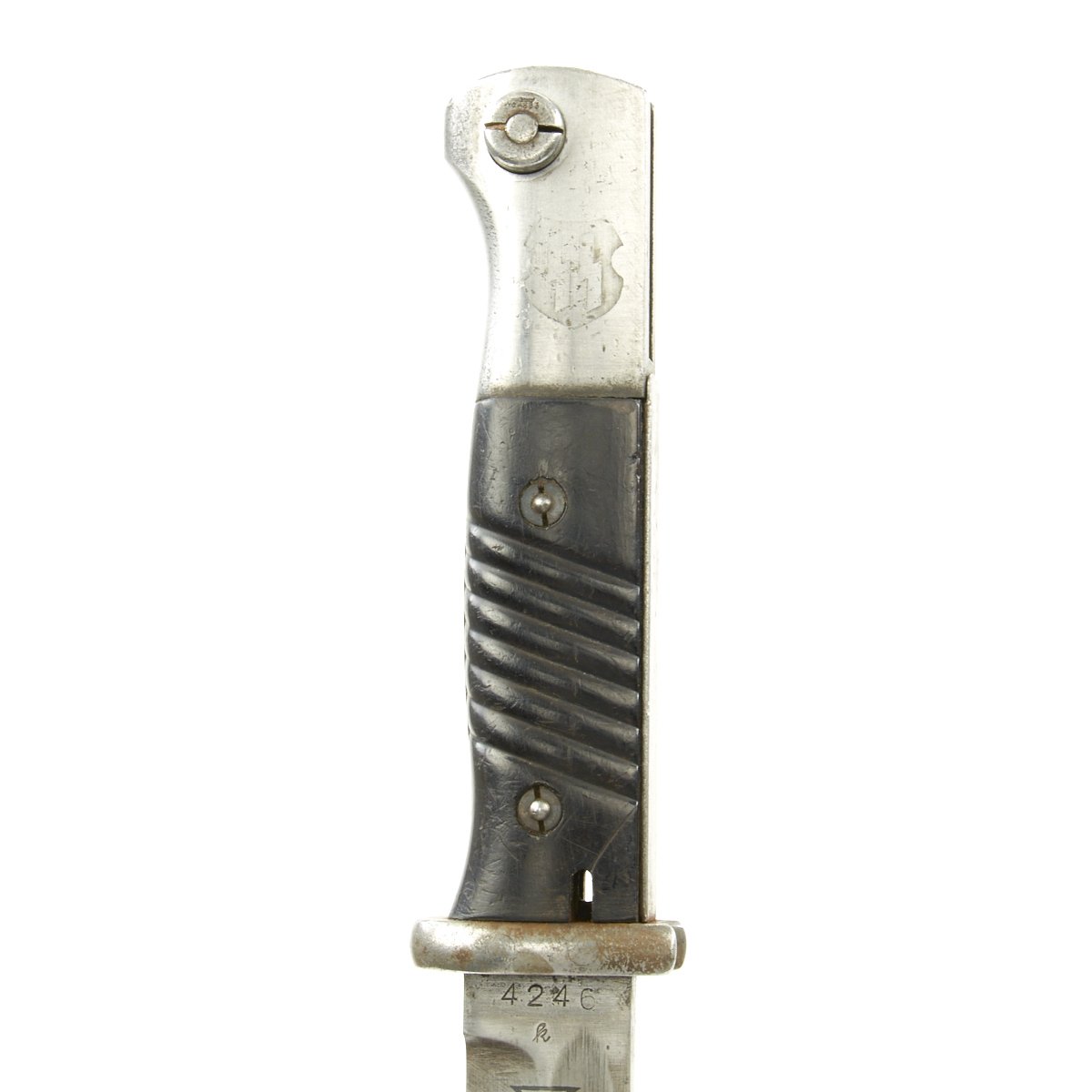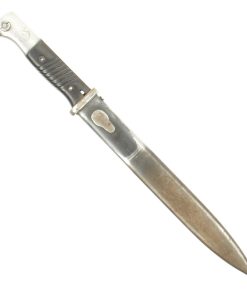Original German WWII 5th SS Panzer Division Wiking Etched Presentation 98k Bayonet by E. & F. Hörster – Dated 1941 Original Items
$ 495,00 $ 148,50
Original Bayonet: Only One available. This is a really nice German WW2 Mauser 98K Rifle bayonet with Bakelite grip plates and the blade dated “41” for 1941. The Maker’s Code 41 asw appears also on the blade directly under the cross guard, and also appears on the throat of the scabbard. German 3 Letter code asw indicates manufacture by E. & F. Hörster of Solingen, the legendary “City of Blades”. This is a well-known and respected firm, so edged weapons from this maker are highly desirable. The pommel of the bayonet is stamped with Waffenamt markings on one side and SS Runes in a shield on the other.
The side of the blade opposite to the Maker’s name is lavishly etched with a presentation panel showing foliage designs, and a stylized SS Runes in circle. The panel itself is marked in German “Fraktur” typeface:-
5 – ᛋᛋ – PANZERDIVISION
WIKING
This is only the second time we have owned a Presentation SS Bayonet, but company director Christian Cranmer has seen a few in his 48 years of this business. This came to us very recently included in the same WW2 Collection as our previous 98K Presentation bayonet came to us in. The bayonet is NOT in brand new condition and looks as if it was used somewhat, but would ANY SS soldier not have treasured such an award never allowing it to be fitted to a rifle even? We don’t know.
We googled PRESENTATION BAYONETS and there are lots of Parade Bayonets and daggers but we also saw a couple that were clearly this style, however we could not read the inscriptions. So taking this with a pinch or a shovelful of salt and a prayer we offer this bayonet for sale.
History of the 5th SS Panzer Division “Wiking”
The 5th SS Panzer Division “Wiking” (German: 5. SS-Panzerdivision “Wiking”) was a Panzer division among the thirty eight Waffen-SS divisions of NSDAP Germany. It was recruited from foreign volunteers in Denmark, Norway, Sweden, Finland, Estonia, the Netherlands and Belgium under the command of German officers. During the course of World War II, the division served on the Eastern Front. It surrendered in May 1945 to the American forces in Austria.
After the invasion of Poland in 1939, Reichsführer-SS Heinrich Himmler sought to expand the Waffen-SS with foreign military volunteers for the “crusade against Bolshevism”. The enrollment began in April 1940 with the creation of two regiments: the Waffen-SS Regiment Nordland (for Danish, Norwegian, and Swedish volunteers), and the Waffen-SS Regiment Westland (for Dutch, and Flemish volunteers).
The Nordic formation, originally organized as the Nordische Division (Nr. 5), was to be made up of Nordic volunteers mixed with ethnic German Waffen-SS personnel. The SS Infantry Regiment Germania of the SS-Verfügungs-Division, which was formed mostly from ethnic Germans, was transferred to help form the nucleus of a new division in late 1940. In December 1940, the new SS motorized formation was to be designated as SS-Division Germania, but after its formative period, the name was changed, to SS-Division Wiking in January 1941. The division was formed around three motorized infantry regiments: Germania, Westland, and Nordland; with the addition of an artillery regiment. Command of the newly formed division was given to Brigadeführer Felix Steiner, the former commander of the Verfügungstruppe SS Regiment Deutschland.
After formation, the division was sent to Heuberg in Germany for training; by April 1941, it was ready for combat. The division was ordered east in mid-May, to take part with Army Group South’s advance into the Ukraine during Operation Barbarossa, the invasion of the Soviet Union. In June 1941 the Finnish Volunteer Battalion of the Waffen-SS was formed from volunteers from that country. After training, this unit was attached to the SS Regiment Nordland of the division. About 430 Finns who fought in the Winter War served within the SS Division Wiking since the beginning of Barbarossa. In spring 1943, the Finns’ 2-year contract ended, and the Finnish battalion was withdrawn. During that same timeframe, the Regiment Nordland was removed to help form the core of the new SS Division Nordland. They were replaced by the Estonian infantry battalion Narwa.
Fast Shipping with Professional Packaging
Thanks to our longstanding association with UPS FedEx DHL, and other major international carriers, we are able to provide a range of shipping options. Our warehouse staff is expertly trained and will wrap your products according to our exact and precise specifications. Prior to shipping, your goods will be thoroughly examined and securely secured. We ship to thousands clients each day across multiple countries. This shows how we're dedicated to be the largest retailer on the internet. Warehouses and distribution centres can be located throughout Europe as well as the USA.
Note: Orders with more than one item will be assigned a processing date depending on the item.
Before shipping before shipping, we'll conduct a thorough inspection of the items you have ordered. Today, the majority of orders will be delivered within 48 hours. The delivery time will be between 3-7 days.
Returns
The stock is dynamic and we cannot completely manage it because multiple stakeholders are involved, including our factory and warehouse. So the actual stock may alter at any time. It's possible that you may not receive your order once the order has been made.
Our policy is valid for a period of 30 days. If you don't receive the product within 30 days, we are not able to issue a refund or an exchange.
You can only return an item if it is unused and in the same state as the day you received it. You must have the item in its original packaging.
Related products
Uncategorized
Uncategorized
Band of Brothers ORIGINAL GERMAN WWII Le. F.H. 18 10.5cm ARTILLERY PIECE Original Items
Uncategorized
Uncategorized
Uncategorized
Uncategorized
Uncategorized
Uncategorized
Uncategorized
Uncategorized
Armored Burgonet Helmet & Polearm from Scottish Castle Leith Hall Circa 1700 Original Items
Uncategorized
Uncategorized
Uncategorized
Uncategorized
Uncategorized
Uncategorized
Uncategorized
Uncategorized
Uncategorized
Uncategorized
